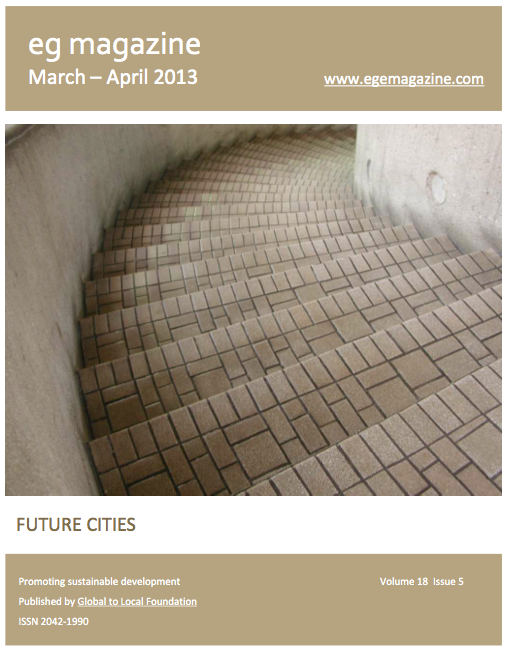Climate Change Adaptation Mitigation or Do you like my Architecture? Article
GBE > Encyclopaedia > Files > Papers > G#1687 N#1591
Climate Change Adaptation Mitigation or Do you like my Architecture Article
About:
- Magazines: EG Magazine
- Project: Future Cities
- Project feedback.
- Article in EG magazine March-April 2013
- BrianSpecMan contributed
- Global to Local 28 March 2013
- Other EG Magazine editions
Climate Change, Adaptation, Mitigation – or do you like my Architecture?
Brian Murphy, founder of NGS, GreenSpec and GreenBuildingEncyclopaedia, architect, seasoned professional specification writer, offers his views on the Future Cities Adaptation Compass tool and Map Table, demonstrated at the project programme’s concluding conference. Prompted by the programme, he offers thoughts on the need for climate and adaptation thinking, with guidance on governance in development control or tighter specification, to be much better integrated into the capability and capacity building of architects, and why this matters.
As a student of construction and architecture thirty something years ago, I learned nothing to prepare me for the climate catastrophe we face, now and in the coming decades. The vast majority of my profession spend 98% of the time with the head in a computer churning out the next legal but climate-inadequate design or working drawings and specifications. 35 hours a year must be dedicated to continuing professional development and they need only do 2 hours (0.1%) on climate and sustainable architecture.
In contrast a trusted work colleague and architect has just completed a PhD in urban heat island effect, says she does not yet have the detailed understanding to apply it in architectural practice, plenty of theories and ideas but no practical experience or evidence based know-how, this will come in the following decades if she decides to specialize, advise us and we have enough time left to benefit.
In the last 5 years I have seen a few relevant publications by concerned parties, local authorities, regional bodies
and government departments bringing climate issues to our attention and I make a point of asking as many audiences as I can for a show of hands ‘who has heard of, read or acted upon any of the publications described by the previous speaker?’ One librarian is brave enough to show her hand, exceptionally a few hands, my students of architecture might just know more than my profession.
Future-Cities Adaptation Compass installed on the table computer in the upright position is a wonderfully simple tool that engages the user/audience with its logical approach to checking a city’s vulnerability, understanding climate change impacts.
It enables users to carry out risk assessments and seek out opportunities, to explore adaptation options, to determine the need for actions and from a vast collection of case studies select appropriate competent sustainable measures; and feedback after the projects has been in place to ensure this tool improves over time.
This tool offers an opportunity for Future Cities to have a life after Interreg. I hope for all our sakes that Future Cities partners see an opportunity to build a consultancy and training off the back of this project to see continual international collaboration on climate solutions.
Industry is not listening yet, and I regret, will only listen when the requirements are written into Development Control legislation; guidance is not enough, our industry has many professionals and solicitors well versed in arguing why that issue does not apply to their project; and regional bodies that back down when challenged by developers.
Future Cities part funded the sustainable design elements of the build of Sussex Exchange 6, the venue of the Future Cities conference. Its aspirations were high, and it wears its green roof well. But sadly the building suffered all the usual value engineering (posh for ‘cost-cutting’) specification substitution exercises that our industry habitually engages in to revert to ‘business as usual’. The story about why various of the ambitious (‘dark green’ specification) features failed to materialize is a valuable and important story to be shared. This is not about finger pointing and embarrassment, but about critical thinking and learning for the future. It’s about rethinking, and adjusting training and development generically to gear up the design and build process to ensure ‘compromise’ (in the trade ‘green’ specs are downgraded to ‘violet’) is minimised.
Learning and Specification software
I know from training staff in use of specification software that most learn haphazardly, inconsistently, in comprehensively and learn in one context and apply the learning in another context inappropriately without question. I agree specification is a task most hate, but that is no excuse, we need to develop competence in all our activities. In support of my colleagues I have been writing specifications, sustainability checklists (1800 reads – in two years) and ‘jargon busters’ (395 pages and 15,000 reads in 2 years) for a few decades now. This is to try to help them ease their way into environmental and sustainable construction. These have proved popular and so are being recreated on green building encyclopaedia website.
Urban Heat Island effect is in there, but I rarely hear architects engaging with the issue let alone proposing solutions to it; and engineers just pop in air conditioning. I think we are all waiting for sophisticated software with all the answers, and over optimistically hail Building Information Modeling as the holy grail that will help us to ‘remake the industry in novel, but desperately needed, ways; transforming an adversarial self-serving Construction Industry into a low cost, low carbon Built Environment industry that sustainably serves society’ (Paul Fletcher Beyond BIM 2012).
So how do we engage with climate change?
Public consultation and community engagement bring dread to designers, are objected to or reluctantly engaged with by developers. They expect and fear the meeting will be about the community arguing with the designer/developer and reduce to loudest voices taking over the meeting and little will be gained, very few see them as a means to collect client requirements to inform the brief.
6 www.seachangesussex.co.uk
7 Jargon Buster Rev 30 265 pages. 2011: Free if you register. (See also Rev 49, 451 Pages, 2015 £4.88)
I also see architects who carried out their desks study with 1:5000 scale maps or aerial photos, pinning up their drawings, poetically announcing their philosophical approach to the design and effectively asking ‘Do you like my architecture?’ Most of the audience cannot understand a word, cannot read drawings nor imagine what is on offer, and they just want to know what have you done to provide safe places for my kids to play in, where are the schools and shops.
For me the most important part of the Future Cities outputs is the ‘Map table’ 8, a table computer that enables anyone that can read a map or plan (not everybody alas, can it work on oblique aerial photograph?) to engage in a discussion about their town or project. This is where their fears, wishes, ambitions could be recorded and even voted on by others to reinforce an issue. It’s where the designers can interact with those ambitions and develop real solutions with powerful intelligent software that can recalculate the results of those modifications at urban and city scale. It allows all the audience to see the changes and understand instantaneously the ramifications, good or bad and try out different options.
What we need is the ability for communities or their representatives to highlight their fears, desires, aspirations; for them to be heard and seen to be included in development briefs and to see that solutions have been implemented; then they might get excited about the place the Architect is creating and less about the poetics, choice of brick or details of their design.
My question to the project partner panel at the conference: ‘Community engagement on climate change is now possible, but once the developers turn up, then its focus shifts to profits, profits, profits: how do we make sure these ambitions become requirements in projects?’ was left unanswered.
Cradle to Cradle Network (C2CN) an Interreg project may have some answers; one work package generated guidance on Governance for development control. 9
The answer from the audience (probably also project partners) was ‘Gentlemen’s Agreements’, but I need something more robust than that;
‘Covenants’ (in the UK that means binding requirements associated with sale of land, obligations on the purchaser of land) that sounds better, my reply to the panel was ‘Contract Specifications’. I leave this as a challenge for Future Cities.
Please create model robust specification clauses that can be included in contracts that can survive Value Engineering and Specification Substitution. “If it not in the Spec I’m not doing it”. Green Building Encyclopaedia are keen to work with Future Cities to create them!
- BrianSpecMan@icloud.com
- T: 01733 238148
- M: 07973 281024
- (UK GMT 09:00-18:00)
8 http://www.future-cities.eu/
9 http://www.c2cn.eu/sites/default/files/C2C_PS_governanceC2C.pdf
© GBE NGS ASWS Brian Murphy aka BrianSpecMan *
11th March 2013 – 12th February 2020
Climate Change Adaptation Mitigation or Do you like my Architecture Article
Images:
Click above to get PDF

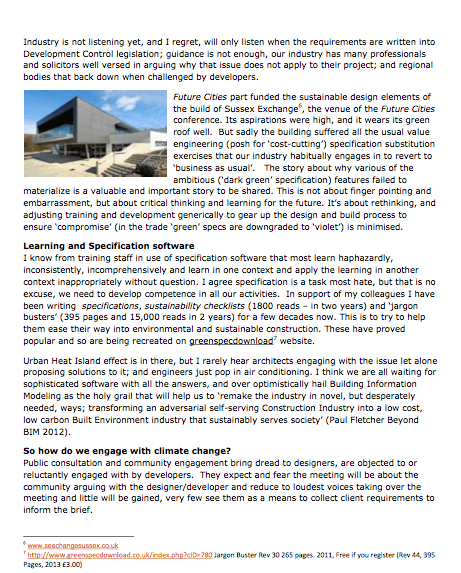
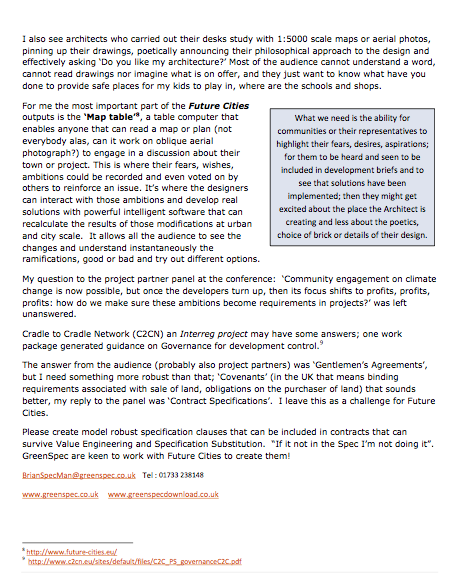
© GBE NGS ASWS Brian Murphy aka BrianSpecMan *
11th March 2013 – 12th February 2020
Climate Change Adaptation Mitigation or Do you like my Architecture Article
See Also:
GBE Jargon Buster
GBE Jargon Buster Theme
- Adaptation
- Business as Usual
- Climate Change
- Community Engagement
- Covenants
- Developers
- Future Cities
- Gentlemen’s Agreements
- Green Roofs
- Mitigation
- Profit
- Public Consultation
- Scenario Modelling
- Specification Substitution
- Urban Heat Island Effect (UHIE)
- Value Engineering
GBE Issues:
- GBE Overheating G#2613
GBE Projects
GBE Information
- NW Region Adaptation Study by Ian Cooper et al.
- Study by Bill Gethen
GBE Past Events
29 April 2013: EU Strategy on Climate Change Adaptation BRUSSELS
25 June 2013: Opportunities for designers and the supply chain from overheating and climate change mitigation The Building Centre, London W1 contact Roger Southcott
4th July 2013: Preventing Overheating The Green Register, Bristol contact Roger Southcott
EG Magazine & Newsletter
- eg magazine March-April 2013
- BrianSpecMan contributed with article on Future Cities Project
- Global to Local 28 March 2013
GBE Checklist
- Refurbishment Decent Homes (Checklist) G#1253 N#1252
- GBE New Build Checklist (Navigation) G#606 N#627
- Adaptation Checklist
GBE Issue Papers
GBE Jargon Buster
GBE Jargon Buster Theme
- Flood (Jargon Buster Theme) G#1357 N#1341
- Climate
- Overheating
GBE CPD
- CPD Topics (Navigation) G#472 N#478
- CDP Topic Refurbishment Retrofit (Navigation) G#1451 N#1419
- GBE Retrofit PAS 2035 (CPD) G#21613
GBE Library
- List of related documents by authoritative bodies
- BSI PAS 2030:2019
- BSI PAS 2035:2019
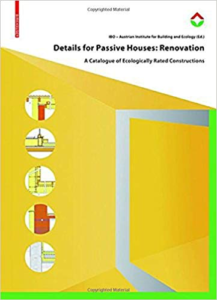
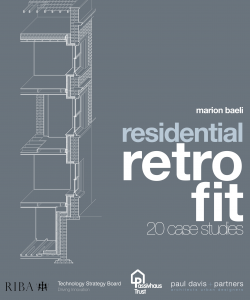
© GBE NGS ASWS Brian Murphy aka BrianSpecMan *
11th March 2013 – 12th February 2020

